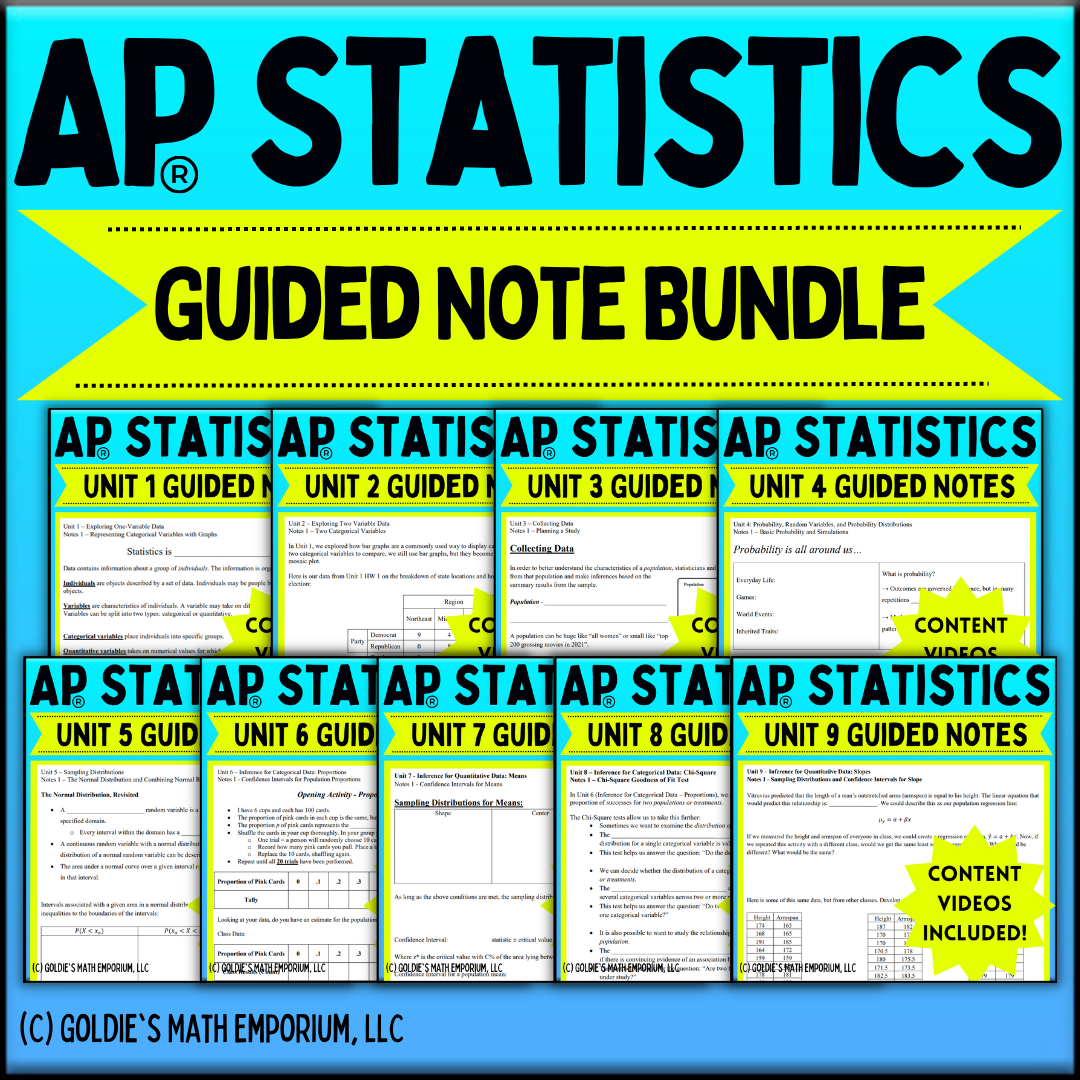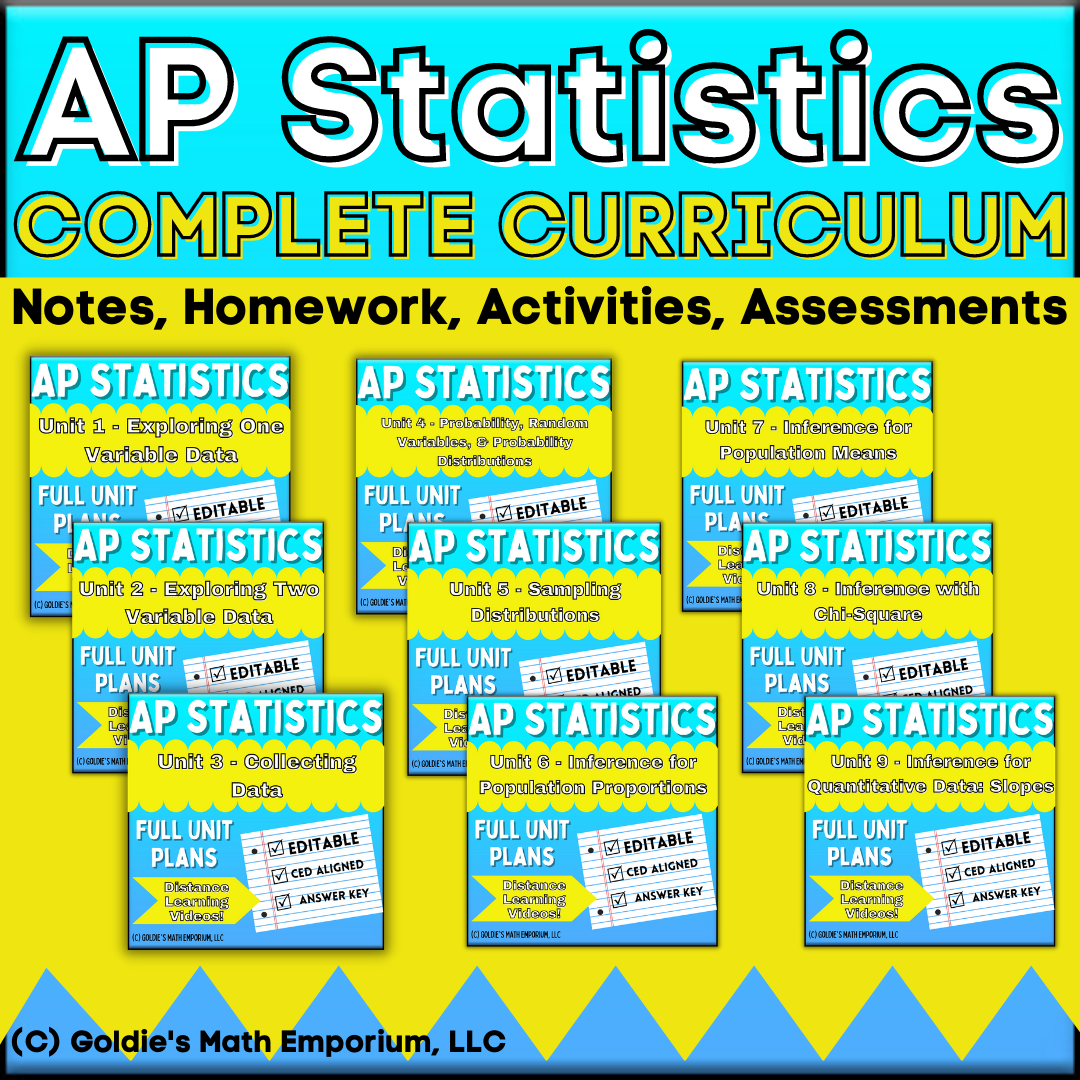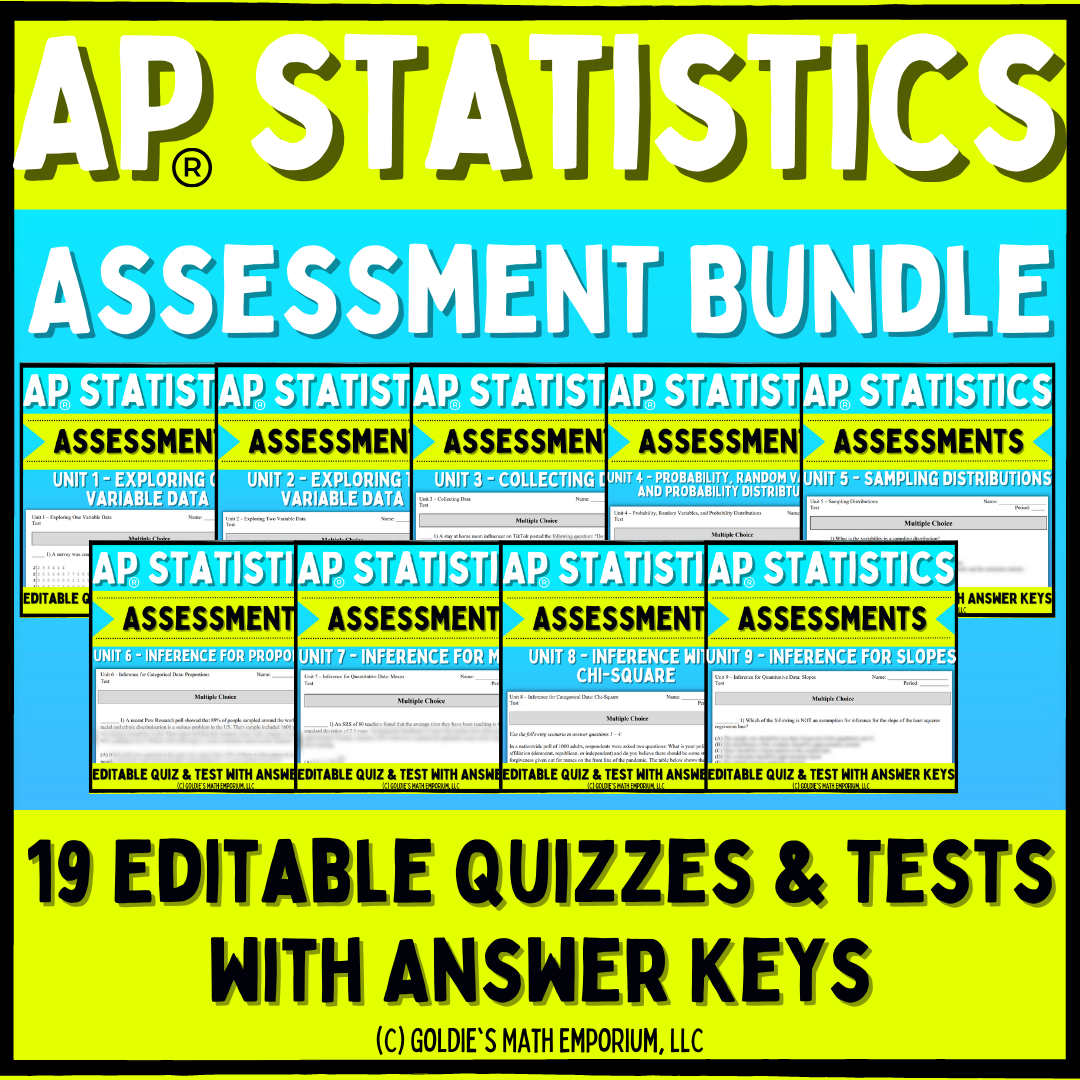 Grading can always be a sensitive subject for teachers, especially at the AP level. I find that many teachers believe their grading system reflects their teaching morals, so when grading conversations do get started, any conversation that suggests a teacher’s grading practice is outdated or reduces student learning in some way, can feel like a personal attack on that teacher.
Grading can always be a sensitive subject for teachers, especially at the AP level. I find that many teachers believe their grading system reflects their teaching morals, so when grading conversations do get started, any conversation that suggests a teacher’s grading practice is outdated or reduces student learning in some way, can feel like a personal attack on that teacher.
That is NOT what this article is about (and not the conversations I like starting!).
I want to put my grading policies and practices in my AP Statistics class out there to help teachers who might need help getting their own grading policies started.
I also love having positive conversations about what grading looks like and how we can change it to help encourage student learning.
 You will hear me talk a lot about formative assessments and summative assessments. Formative assessments in the classroom are intended to monitor student learning as they progress through a unit while giving feedback to both teachers and students. This can look as simple as bell ringers and exit slips, or longer assignments such as homework or quizzes. Summative assessments are summative in nature; they take place at the “end” of a particular unit and are intended to evaluate the student based on some benchmark or learning target.
You will hear me talk a lot about formative assessments and summative assessments. Formative assessments in the classroom are intended to monitor student learning as they progress through a unit while giving feedback to both teachers and students. This can look as simple as bell ringers and exit slips, or longer assignments such as homework or quizzes. Summative assessments are summative in nature; they take place at the “end” of a particular unit and are intended to evaluate the student based on some benchmark or learning target.
AP Statistics Gradebook Weighting
Our Math Department policy is: 70% of a student’s grade is summative assessments and 30% of a student’s grade is formative assessments. We are working towards a standards-based grading model, and this percentage breakdown is part of our transition to that.
From the 70/30 breakdown, it is up to the individual teacher on how they would like to use those percentages in their class. In addition to AP Statistics, I teach AP Computer Science A, AP Computer Science Principles, and Geometry. While all those classes have the 70/30 breakdown, each of those gradebooks do record different elements of class (which I will write about later!) but I want to talk about specifically what I do in AP Statistics.
Summative Assessments
I give two types of summative assessments in my class: the unit test and the nit project. I try to make the unit test as close to the AP Exam as possible; meaning I include AP exam multiple choice questions and I try to use free response questions that students might find on the AP exam. All my unit tests are 20 multiple choice questions with about 2-3 free response questions. They do NOT spiral back to previous units. Firstly, because I don’t have the time in class to assess on previous learning targets as well as the new ones, but secondly, because part of the standards-based grading model is to NOT continuously assess standards they have already shown proficiency on. Note that this does not mean I don’t review past content, but I just don’t assess it.
The other summative assessment I give is the unit project. It is my goal to make the unit projects similar to the investigative task on the ap exam (question #6) where they have to apply what they know to a new problem. I do ask students to do things in their project that they would not have to do on the AP exam, but the idea is to extend their learning into a new problem. I give the unit project, explain what they need to do and how I will grade it, and then they usually get about a week to complete it.
For these summatives, I do 60% weighting for the unit test and 10% weighting for the unit project. Both of these, since they are summatives, can be reassessed after I give feedback. You can read more about my reassessment policies here.
Formative Assessments
 I give a lot of formatives in my class, from one-question exit slips to full class period quizzes. In a true standards-based grading classroom, formatives do not have any weight in a student’s grade. We have not made the transition over to standards-based grading in our school, and “getting rid of” grades for formatives is a tough mindset for students, who need that reward of a grade in order to complete their formatives (once they switch over to the standards-based grading mindset though, they find they don’t need that extrinsic motivation, but that is a conversation we will have another day).
I give a lot of formatives in my class, from one-question exit slips to full class period quizzes. In a true standards-based grading classroom, formatives do not have any weight in a student’s grade. We have not made the transition over to standards-based grading in our school, and “getting rid of” grades for formatives is a tough mindset for students, who need that reward of a grade in order to complete their formatives (once they switch over to the standards-based grading mindset though, they find they don’t need that extrinsic motivation, but that is a conversation we will have another day).
I do not take grades for all the formatives I give in my AP Stat class, but I do take grades for homework, quizzes, and activities.
Homework in the Gradebook
For the homework, I give worksheets with practice problems every time we finish a note set. This is for students to practice applying what we completed in the notes. I collect homework on the due date, grade for feedback, and return the assignment. If a student makes a good attempt at all problems, they get full credit for completion. I grade for feedback, so they can learn, but I do not penalize them for practice. I also accept late work for full credit, but I make sure students know that if they don’t turn it in on the due date, I cannot guarantee timely feedback before their quizzes or tests.
Quizzes in the Gradebook
For the quizzes, I give 10 multiple choice questions and 1-2 free response questions. I do grade the quiz for correction and give them a grade that is similar to a test grade. However, since it is formative and is intended to be a learning experience, if they score better on their test (which hopefully they will) I replace this quiz score with their unit test score.
Activities in the Gradebook
For the activities, we usually do most of the activity in class, but some of the reflection questions are assigned as homework. AP students usually don’t need motivation to complete in-class activities, but I still like to assign a completion grade to these because it makes them feel good.
Each of these (homework, quizzes, and activities) are all lumped together in the grade book as 30% “formatives”, but I do assign each of them a separate point value. Homework gets anywhere between 10-20 points, depending on the length (for instance, the test reviews are usually longer, and I give more points for those). The quizzes are 50 points, and the activities are usually anywhere from 5-10 points, again, depending on the length and how much time we spend on them.
What do you think??
That is my grading policy in AP Statistics! My goal this school year is to do a better job aligning our student standards to the assessments, to give more standard-based learning feedback. That will be a work in progress and I’m hoping to share that with everyone throughout the year! We are also working in a new “flex mod” schedule, and that is really changing how I teach, so we are really trying a lot of new things this year (what flex mod is and how I plan for it is a blog post that is coming soon!).
If you are an AP Statistics teacher, how do you grade? What is your grading paradigm? I would love to hear so comment below!







0 Comments